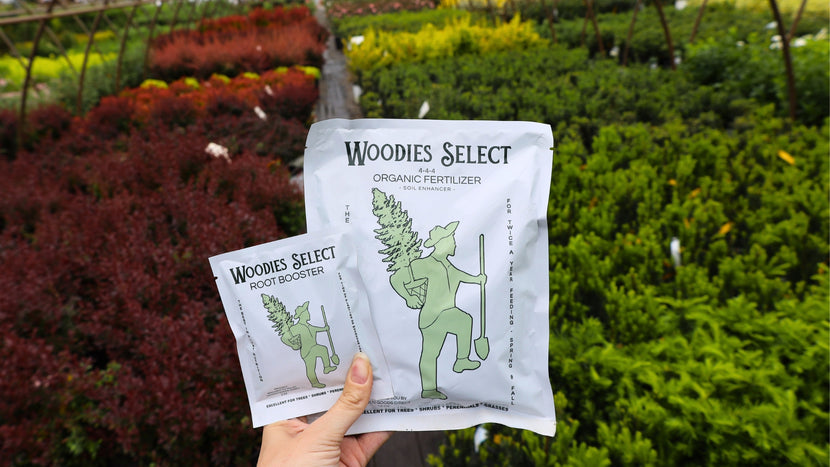
Harnessing the Power of Mycorrhizal Fungi for Healthier Plants
The use of mycorrhizal fungi in landscaping represents a cutting-edge yet back-to-basics approach to cultivating healthier, more resilient plants. These fungi form a symbiotic relationship with plant roots, offering numerous benefits that can significantly enhance any landscape's overall health and aesthetics. Let's explore the transformative advantages of integrating mycorrhizal fungi into your gardening practices.
What are Mycorrhizal Fungi?

Mycorrhizal fungi are a type of beneficial fungi that form a mutualistic association with the roots of most plant species. These fungi extend far beyond the root system into the soil, increasing a plant's reach for water and nutrients.
There are two main types of mycorrhizal fungi: ectomycorrhizal, which forms protective barriers around plant roots, and endomycorrhizal, which penetrates the root cells. Ectomycorrhizal fungi and endomycorrhizal fungi represent two distinct types of mycorrhizal associations that differ fundamentally in their interaction with plant roots.
Different Types of Mycorrhizal Fungi
Ectomycorrhizal fungi
Ectomycorrhizal fungi, often associated with trees such as pines, oaks, and birches, form a symbiotic relationship primarily by developing a dense network outside the plant roots. This network, known as the mantle, envelops the root tips and creates an extensive sheath that serves as a protective barrier. This mantle shields the roots from pathogens and extends into the soil with hyphae, enhancing the plant's ability to absorb water and nutrients.
The ectomycorrhizal fungi do not penetrate the cell walls of the root tissue, maintaining a distinct boundary that facilitates nutrient exchange at the interface between the root cells and the fungal hyphae.
Endomycorrhizal fungi
On the other hand, endomycorrhizal fungi are characterized by their ability to penetrate the root cells of their host plants. This type of mycorrhizal fungi forms associations with a broader range of plants, including many horticultural crops. The fungi penetrate the root cells and become key sites for nutrient exchange, particularly phosphorus, between the fungi and the plant.
Unlike ectomycorrhizal fungi, endomycorrhizal fungi do not form an external mantle around the root, making their symbiotic interaction more intimate as they directly infiltrate the host plant's cells. This direct penetration allows a more efficient transfer of nutrients directly into the root cells, enhancing the plant's growth and health in nutrient-poor soils.

Key Benefits of Mycorrhizal Fungi in Landscaping
- Enhanced Nutrient Uptake: Mycorrhizal fungi significantly improve plant nutrition by extending their hyphal networks into the soil, accessing nutrients far beyond the root zone. They are particularly effective in capturing phosphorus, nitrogen, and micronutrients, which are essential for plant growth, reducing the need for chemical fertilizers.
- Increased Water Absorption: The extensive hyphal network of mycorrhizal fungi increases the soil volume explored by plant roots, enhancing their water uptake. This capability is especially beneficial in arid conditions or during droughts, making landscapes more resilient to water stress.
- Benefits to Erosion Control: Mycorrhizal fungi help to stabilize the soil by binding soil particles into aggregates, which improves soil aeration and water retention. This supports healthier plant growth and reduces erosion and runoff due to the “wed” created by mycorrhizal fungi.
- Disease Resistance: Plants associated with mycorrhizal fungi exhibit increased resistance to root pathogens and diseases. The fungi act as a physical barrier around the roots, protecting them from invasive pathogens and reducing the need for chemical pesticides.
- Stress Tolerance: Mycorrhizal fungi can enhance plants' tolerance of environmental stresses such as salinity, heavy metals, and extreme temperatures. This is due to their ability to improve the overall physiological and biochemical status of the plants they colonize.

Implementing Mycorrhizal Fungi in Your Landscape
- Start at Planting: We recommend Woodies Root Booster when establishing new plantings. We worked with the country's leading experts to develop our formula, which contains mycorrhizal inoculants to ensure your plants benefit from a hyphal network.
- Application Methods: Mycorrhizal fungi can be introduced by mixing woodies Root Booster into the soil during planting. The simplest way is to empty the packet of root booster into the planting hole before setting the rootball in place.
- Avoiding Disruption: Minimize soil disturbance after planting and in established areas to protect the intricate web of mycorrhizal fungi.
- Careful Management: Avoid excessive use of chemical fertilizers and pesticides, as they can harm the mycorrhizal fungi and diminish their benefits. We have also developed Woodies Select Organic Fertilizer to enhance the beneficial microbes in your soil further when additional applications of Fertilizer are needed. This product is organic, so there's no need to worry about incorporating chemicals into your soil.
Shop Mycorrhizal Fungi Fertilizer Online Today
Incorporating mycorrhizal fungi into your landscaping practices boosts plant health and vigor and promotes a more sustainable garden and landscape management approach. By enhancing nutrient uptake, increasing water efficiency, improving soil structure, and boosting disease resistance, mycorrhizal fungi provide a foundation for a thriving, resilient landscape. Embrace this natural solution and watch your garden transform into a lush, vibrant ecosystem.
